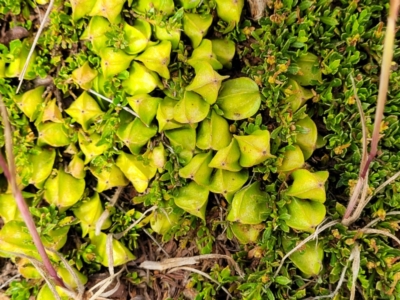Other Shrubs
Announcements
There are currently no announcements.
Discussion
Tapirlord
wrote:
13 Dec 2025
Hmmmm. Tentatively i've identified both sets of photos to D.fusca through the Plantnet key. The key seperates D.fusca from D.stricta by the presence of papillose hairs on the stem (smooth in D.stricta); the stems of these plants appear to be hairy. I would like to do a little bit more digging into this one before confirming however, it is an atypical site for D.fusca and it would be a VERY typical site for D.stricta being in that sandstone peppermint country a little closer to the coast.
Dampiera fusca
Tapirlord
wrote:
13 Dec 2025
I reckon your right on the money Tina! Totally reads as Rutaceae and it seems as though Boronia rhomboidea is the best looking canidate out of what's around in the vicinity. It seems as though it occurs more typically up on the Sandstone swamps in the Budawangs; so close by.
Boronia rhomboidea
Csteele4
wrote:
13 Dec 2025
@Tapirlord would love your thoughts here. I'm getting Boronia rhomboidea, which would be unusual but not impossible (there is another sighting in Mongarlowe on iNat). Definitely reads as Rutaceae to me. What do you think?
Boronia rhomboidea
Significant sightings
- Grevillea iaspicula
- Hakea lissosperma at Cotter River, ACT
- Leionema lamprophyllum subsp. obovatum at Cotter River, ACT
- Zieria cytisoides at Tharwa, ACT
- Berberis vulgaris at Campbell, ACT
- Rhodamnia rubescens at Cordeaux Heights, NSW
- Solanum sulphureum
- Wilsonia rotundifolia at Lake George, NSW
- Podocarpus lawrencei at Cotter River, ACT
- Lavandula stoechas at Hawker, ACT
Top contributors
- Tapirlord 2.1K
- Mike 1.2K
- trevorpreston 983
- JaneR 814
- MichaelBedingfield 808
- BettyDonWood 698
- plants 633
- waltraud 505
- MatthewFrawley 500
- ConBoekel 475
Top moderators
- Tapirlord 8K
- MichaelMulvaney 3.5K
- BettyDonWood 1.7K
- plants 1.7K
- MichaelBedingfield 1.4K
- natureguy 1.4K
- RWPurdie 520
- waltraud 293
- Csteele4 293
- Mike 249














































































































